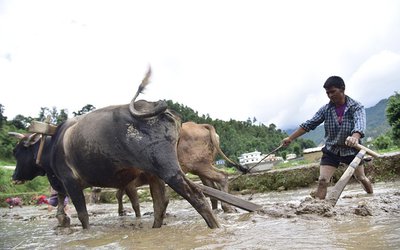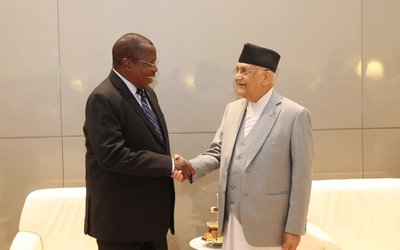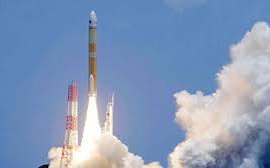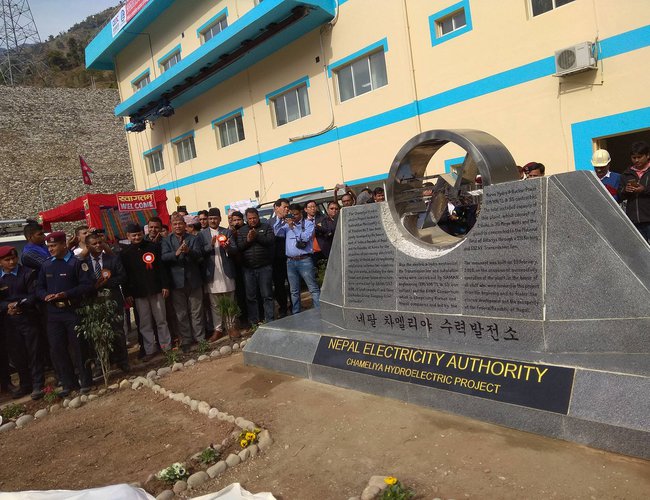
Faced with hassles of all kinds thanks to frequent political interventions, war of agents, political instability and mismanagement, the 30 MW Chameliya Hydropower Project looked like a bane. Now that the project has started generating electricity and money, it is becoming a boon for Province 7, the erstwhile far-western region.
With the formal inauguration by Prime Minister Sher Bahadur Deuba, Chameliya Hydropower Project, which many saw as a burden of the far-west, has turned into a jewel. The project will help Province 7, which lacks the necessary linkages with the rest of the country, to accelerate its economic activities.
This is the first major infrastructure project supported by South Korea in Nepal. The importance of the project was highlighted when Chinese and Korean ambassadors also went to Chameliya.
For prime minister Sher Bahadur Deuba, who laid the foundation of the project 11 years ago, the completion of the project is a matter of political and personal pride. The inauguration of the project was another feather in the cap of Managing Director Kul Man Ghising, who assumed the position of MD almost one and half years ago with two goals in mind: ending load shedding and completing the hydropower and transmission projects, which became a financial burden for NEA.
“I am very happy to formally inaugurate the hydropower project,” Deuba said, while expressing his gratitude towards all the stakeholders, “Province 7 has big rivers like Karnali and Mahakali, which make me believe that this Region can emerge as the wealthiest by way of utilization of water resources.”
Despite all difficulties and shortcomings, NEA has successfully ended the prolonged power cut by completing the highly controversial 220 KV Khimti-DhalkebarTransmision project. Completion of Chameliya, which was virtually in ruins, is another jewel in MD Ghising's achievements.
“It is a major achievement for NEA. It is the fruit of the government's support and the team work and leadership of NEA,” said Ghishing. “As this project is now in operation, it generates money as well.”
Constructed with goodwill and support from Republic of Korea and funding from Nepal government, this is the first big project constructed in the remote parts of Nepal. The completion of this project is a matter of satisfaction for the government of Korea, which invested in improving the lives of the people in one of the poorest regions of Nepal.
The project includes three components, Electro-Mechanical Work (Generating Equipment and Switchyard facilities, Hydro-Mechanical Work (Hydraulic Gates, Stop Logs, Hoists, Trashrack and Steel penstocks) and Balach-Attariya 132kV Transmission Line & 132kV Line-bay Extension.
Situated 800 KM far west of the Capital at Balach of Darchula, 136 kilometer long Balach-Ateriya 132kVTransmission line has already helped evacuate 8.5 MW generated by Api Hydro.
The project spent Rs. 7.84 billion in land acquisition, electromechanical components and hydro-mechanical and Rs. 600 million for consultants. Similarly, Rs. 2.54 billion for Transmission and Rs. 194.8 million for other transmission related works and Rs. 50 million for environment protection. Loss in fluctuation of dollar conversion, adjustment of price and an additional cost of Rs. 3 billion for administration added 6.18 billion rupees. The total cost almost reached Rs.15 billion.
Built with support from Korea, the 131 kilometer long 132 kV Transmission is going to be a lifeline for some other projects now under construction in the region.
Along with frequent political interventions, prolonged instability, bad governance and the mismanagement, this project also faced natural wrath with the squeezing of the 800 meter tunnel.
Had NEA provided Rs.1 billion to the contractor through its technical studies and expertise, the project would have been completed about four years ago and would have generated Rs.8 billion.
As the issue of variations order surfaced with the squeezing of the tunnel, all related stakeholders, including politicians and government officials, turned this project into a milking cow. Although his decision as a PAC chair prolonged the project, Janardan Sharma, former minister of Water Resources, took a bold decision to pay variations with the target to complete the project.
The electricity generated by the project will be evacuated to the national power grid via the 132kV Blanch-Attariya transmission line. The 131-km transmission line will be used to transmit electricity produced in Darchula to the business hub of Attariya in the far west.
Secretary
of Ministry of Energy and Chairman of NEA Board Anup Kumar Upadhyaya was also
quite enthusiastic. He said the project was also challenging for technicians
because of its geology and it was challenging for policy to take risky
decision. “We were able to take both under the leadership of ministry and NEA,”
said Upadhayaya.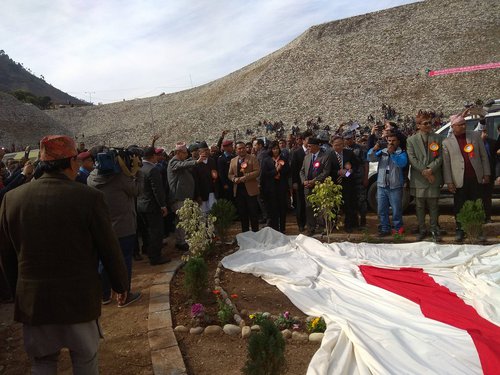
The project faced the biggest hurdle in May 2014 when all work came to a grinding halt following the government’s refusal to make an additional payment of Rs1.09 billion. The payment was sought by China Gezhouba Group Corporation, the civil contractor of the project, citing “cost variance resulting from the squeezing of the tunnel”.
The contractor agreed to resume work after being summoned to the Energy Ministry by the then energy minister, Janardan Sharma. The Chinese contractor for the project, which returned to work in October 2016, then sped the work up and completed the construction within the deadline.
The 30 MW Chameliya Hydroelectric Project, which saw several cost variations, controversies and frustration over delays, has now been connected to the national grid, nearly 11 years after the work started in January 2008.
The peaking run of river project, which can generate minimum six hours in full capacity, was supposed to be completed in May 2011. With the commencement of Chameliya, the country's total electricity production capacity has reached 956 MW. The project's estimated cost was Rs 8.34 billion but has now nearly doubled to Rs 15 billion.
"This project will help boost economic activities in the region as well as the overall development of the area. The region can generate up to 20,000 MW of electricity from rivers like Mahakali, Karnali, Chameliya and Budhinanda," said PM Deuba, inaugurating the project.
Amid the criticism of time and cost overrun, squeezing was encountered in 843 m of digging, out of the total 4 km, and the treatment of the squeezing took lots of time while the inflated price of the cost overrun courted controversy and work was stopped for about a year when the oversight agencies started to investigate.
This
shows how political interventions, instability and mismanagement helped to
escalate the cost and increase the burden. Due to all these, NEA had to bear a
loss of over Rs 7.50 billion in delay in the completion of the project.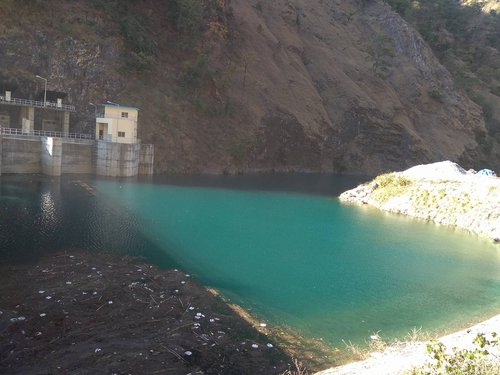
“The project built with the newest technology can help to end the power cut in this region and will also help my campaign of ending the load shedding,” said MD Kulman Ghising, addressing the inaugural program."Tunnel squeezing and high cost of the treatment, delay in evaluation of the additional work by the civil contractor and changing government also were a few key reasons behind the delay of the project," Ghising explained.
Now, the project can produce electricity under full capacity for six hours a day when the electricity demand is at peak. “Currently, we are storing water during the day and night when the demand for electricity is low and are operating the plant at full capacity from 6pm-9pm and 6am-9am when the power demand is high,” said Ajay Kumar Dahal, the project chief. “We will generate electricity as instructed by the NEA load dispatch centre as we have started the commercial production.”
From being a resource drain, Chameliya Hydropower Project has turned into a money minting project, set to transform the life of people of far west Nepal as conceived by Korean government.
All the photographs courtesy by Sachen Gautam

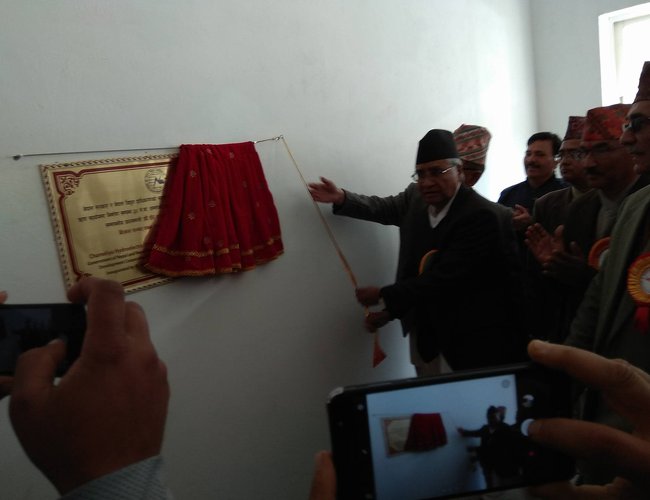
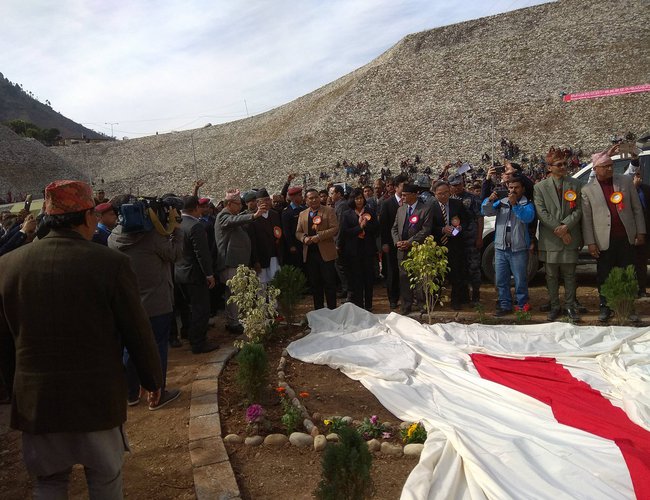
- MELAMCHI WATER SUPPLY: No Interruption During Monsoon
- Jun 25, 2025
- KOREAN RETURNEES: Successful Integration
- Jun 25, 2025
- UPPER TRISHULI-1: Engaging With Local
- Jun 25, 2025
- IME GROUP: Twenty Five Years Of Journey
- Jun 24, 2025
- NEPAL’S AIR POLLUTION: A Growing Health Concern
- Jun 24, 2025




